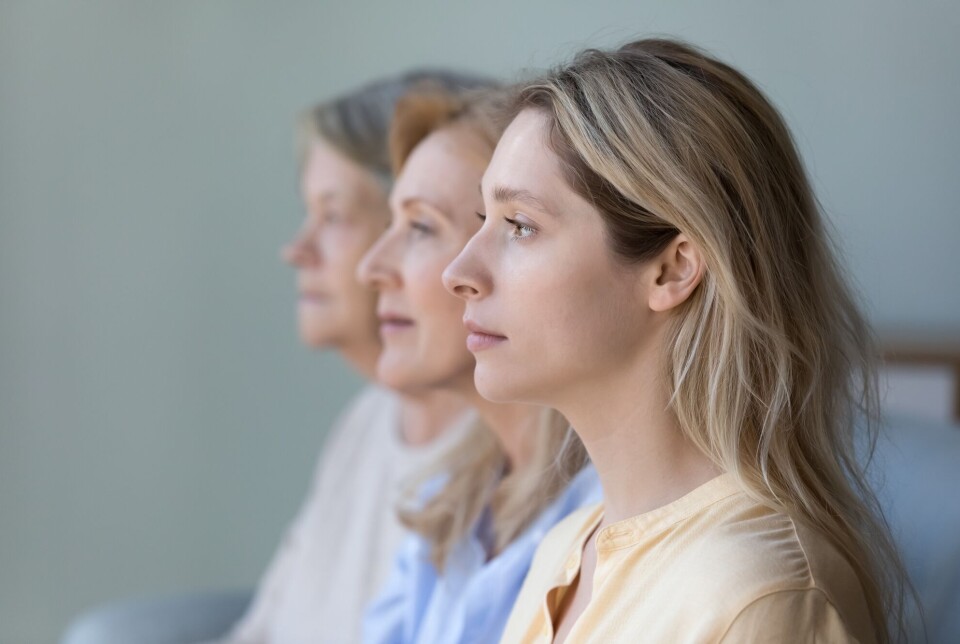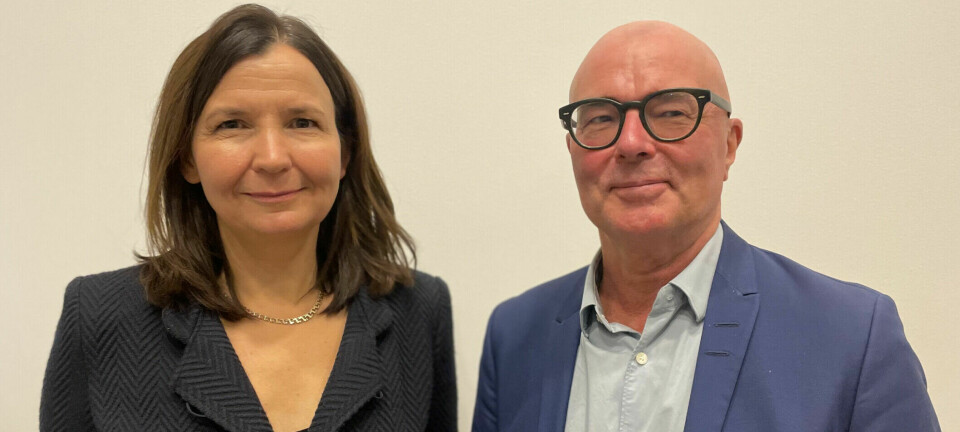
How happy are you on a scale from 0 to 10?
People in Norway – 10,000 of them – have been asked how satisfied they are with their lives.
“On a scale from 0 to 10, how satisfied are you with your life overall?”
On average, when asked this question, people answer 6.8.
But behind this average figure hide some startlingly large differences.
In particular, a great disparity has emerged in the perceived quality of life between the young and the elderly in Norway.
Life lacks meaning
Previously, younger people responded that they were the most satisfied with their lives.
The elderly expressed the greatest dissatisfaction.
“Now the pattern has been completely reversed,” Ragnhild Bang Nes says.
Nes is a researcher at the Norwegian Institute of Public Health (NIPH). She warns that it is very serious when so many young adults in Norway now feel that their lives lack meaning.
How the age groups responded
The NIPH researcher points out that this is a relatively new trend.
When the researchers ask people in more detail, they find that many of the problems that youth and young adults struggle with are linked to loneliness, financial problems, and mental health problems.
Older members of society answer the exact opposite on the Statistics Norway survey: They are very satisfied, both overall and in most areas of their lives.
- Young people aged 18 to 24 respond with an average of 6.4 when asked to evaluate their quality of life on a scale from 1 to 10.
- Young adults aged 25 to 44 respond with an average rating of 6.5. This is almost as low as the younger group.
- Mid-life Norwegians aged 45 to 66 respond with 6.9.
- Older adults aged 67 to 79 respond with a whopping 7.5.
- The very oldest individuals over 80 respond with 7.4.

Easy to compare responses
Ragnhild Bang Nes has led the work in recommending which measurement tools Statistics Norway should use in this survey.
“Asking people a simple question like ‘How satisfied are you with your life overall?’ makes it easy to compare responses," she says.
Most viewed
“This question has now been used in a large number of surveys,” the researcher says.
This allows researchers to make comparisons both over time and between different population groups.
Who is better off in society? Who is lagging behind?
This kind of quality of life data can be used to prioritise political efforts.
Skewed distribution between old and young
In the new National quality of life statistics presented by Statistics Norway in November, there is almost no difference between women's and men's experience of their satisfaction with life.
Instead, the researchers see a skewed distribution between older and younger adults, which has become stronger over time.
Youth and young adults feel less secure than before.
The lower feeling of security appears to be linked to more mental health problems and poorer self-esteem among young people.
Elderly people are happy
“If you're a young person or a young adult in Norway today, you tend to have a bleaker view of the future,” Nes says.
The researcher believes the larger context for the decline in life satisfaction among young people has to do with more negative future expectations regarding educational opportunities, the job market, and whether they will have a good life.
“On the other hand, if you’re older and live in Norway, have good health ,and relatively good finances, you're likely among the happiest people in the world today," she says.
Even bleaker in 2023
The researcher says that she also has figures that have not yet been published.
But based on these latest figures, she can report that the trend does not appear to be turning.

“We must expect that the psychosocial climate in the population is subdued," Nes says.
She points out that we live in an expensive time. It’s costing more and more to find a place to live.
“The economic imbalance in society, and especially in cities like Oslo, is growing more and more. And there’s war in the world,” she says.
Largest decline in Norway
The overall decline in life satisfaction among the population appears to be greater in Norway than in many other countries.
This is despite the fact that Norway , objectively speaking, is a country where people have good reason to believe that they have a good life.
A lot of research has shown that people often readily adapt to the living conditions they live under, Nes explains.
This means that most people also tend to get used to improvements in living conditions and prosperity. We take our comfortable life for granted.
Perhaps this makes us less robust in the face of downturns? the researcher speculates.
Least satisfied with finances and physical health
People were asked whether they experience their life as meaningful. They were asked about how they experience commitment and optimism, and about their relationships with other people.
Statistics Norway has also asked people more detailed questions about how satisfied they are with their own health, their finances, and their housing.
People tend to be the least satisfied with their physical health, according to Statistics Norway.
And with their finances.
The average Norwegian responds with a score of 6.2 for both these factors.
People are most satisfied with the place where they live, responding with an 8.
Life isn’t meaningful
Many young people aged 18 to 24 and young adults between the ages of 25 and 44 respond that they experience their lives as lacking in meaning.
In addition to life not feeling meaningful, young people often report that they are not satisfied with their mental health. Around 40 per cent of all young people report a low score for this factor.

In Norway, 67-79 year olds thus lay claim to having the highest quality of life in most areas of their lives.
Income and work increase satisfaction
If you belong to the quarter of Norway’s population with the lowest income, you respond with an average of 6.2 to the question of satisfaction with your life.
If you belong to the quarter with the highest income, the average response is 7.3.
The proportion of the population in Norway who report a low quality of life is generally much larger among those who earn the least compared to those who earn the most.
By far the group least satisfied with their quality of life are the unemployed (5.0) and those unable to work due to disability (5.3). More than half of this group report low satisfaction with their life overall.
Being employed seems to play a significant role in how satisfied we are.
Pensioners are clearly the most satisfied with their lives, scoring an average of 7.5.
Single parents struggle
Among different cohabitation groups, it is partners and married couples without children who report having the best lives. They rate their happiness at 7.3.
Couples with children respond with an average of 7.0.
Those who view life most negatively are single parents without a partner, scoring 5.6. More than half of all single parents are dissatisfied with their own financial situation.
Immigrants and non-heterosexuals
Immigrants’ responses are generally almost as high (6.7) as the rest of the population. But here there are big differences between groups from different countries, according to the Statistics Norway figures.
People with mental health problems rate their quality of life 4.7, indicating very low life satisfaction. People with long-term health problems average 5.9.
Non-heterosexuals respond with 5.8.
Small geographical differences
Ragnhild Bang Nes and Statistics Norway find only small differences related to where in the country people live.
They find almost no differences in life satisfaction between urban and rural living.
“This may be because most people choose to live where they feel most comfortable. It could also be because it’s good to live in most places in Norway,” Nes says.
People living in more central locations are, overall, more satisfied with their physical health and social relationships.
Those living in less central areas are more satisfied with the free time they have at their disposal.
Norway is falling on the global happiness scale
The UN has conducted a global study that is similar to the Statistics Norway study.
In the World Happiness Report, a thousand people in 146 countries were asked by the Gallup Institute how satisfied they are with life on a scale from 0 to 10.
As the only Nordic country, Norway has steadily fallen in the international rankings.
Norway was in first place in the world in 2017.
Last year, Norway was ranked as number 6 – the lowest in the Nordics.
“We can still consider ourselves as some of the happiest people. The difference between Finland at number 1 on the list and Norway at number 7 is not large,” Nes says. “But this trend may indicate that Norway is heading off track a bit."
More stress and worry in the world
While the Finns come out on top in the World Happiness Report, the populations of Afghanistan and Lebanon rank at the very bottom. In no other countries do people have such low life satisfaction as the Afghans and the Lebanese.
“Quality of life measurements showed that overall satisfaction in the world was on the rise until 2011,” Nes explains.
“But in the last ten years, we’ve observed a prolonged trend of more stress, more worry, and increased sadness in most countries around the world.”
A lot of generosity during the pandemic
At the same time, Ragnhild Bang Nes and her colleagues researching quality of life are still able to see much that is good:
Globally, positive emotions occur more than twice as frequently in people as negative emotions.
Researchers are also surprised by how few negative feelings the pandemic created in the three years 2020, 2021, and 2022.
On the contrary, many people in the world experienced something that was almost a pandemic of goodwill and generosity from others.
The proportion of people who gave help to strangers increased in all parts of the world.
Everywhere during the pandemic, people donated more money to charity and contributed more volunteer work.
Researchers also noted that certain countries in Eastern Europe – like Romania, Bulgaria, and Serbia – experienced a very positive development in terms of increased quality of life in recent years.
Small differences make people happier
Something else that the researchers can tell us is that people tend to be happiest in countries where the economic difference between individuals is small.
Other factors that make people happier are good health, having social relationships with other people, and living in a country without corruption.
———
Translated by Ingrid P. Nuse
Read the Norwegian version of this article at forskning.no
References:
Hvor fornøyde er vi med livet i Norge? (How satisfied are we with life in Norway?), Statistics Norway article, November 2023.
Livskvaliteten i befolkningen er fortsatt ujevnt fordelt (The quality of life in the population is still unevenly distributed), Norwegian Directorate of Health article, November 2023.
Nes et al. Lykken satt på prøve: Verdens lykkerapport 2022 viser økt stress og bekymring og en pandemi av generøsitet (Happiness put to the test: The World Happiness Report 2022 shows increased stress and worry and a pandemic of generosity), National Institute of Public Health, 2022.
Varme relasjoner i kalde tider (Warm relations in cold times), National Institute of Public Health article, March 2023.







































